Breakfast in the Golden Peninsula: Kaya Toast
By the reckoning of the ancient Greeks, India was the far end of the world. Though his maps exist now only as reconstructions by later scholars based on his words, the world as envisioned by Greek/Libyan scholar Eratosthenes sometime around 200 or 250 BCE has Asia tapering off to the east and terminating with the southernmost tip of India (called Coniaci by Eratosthenes, Cape Comarin by the English, and Kanyakumari by the people of India who live there now). To the south is an oblong blob representing Taprobane, the ancient Greek name for Sri Lanka. India is separated from Scythia (the steppes of Central Asia) by the Ganges River and the Taurus mountains of southern Turkey.

This picture of the world, inaccurate as it might be, was quite an accomplishment for Eratosthenes to compile merely from studying the collected learning amassed at the Great Library of Alexandria. By the time of Ptolemy–not the Ptolemaic Pharaohs whom Eratosthenes served but the Greek mathematician who wrote the Geographia describing the world as known by the Roman Empire of the time–the Western world had begun to whisper of a Golden Peninsula beyond India, a land of plentiful gold at the far end of the world.

Ancient Indian literature also speaks of a Land of Gold to the south or east, and the people of China sometimes call the Nanyang region of southeast Asia the “Great Golden Peninsula.” Though historians can and do disagree, it is often assumed that this fabled land of gold was the Malay Peninsula. The peninsula is currently primarily home to the peninsular portion of Malaysia, with just a bit of Myanmar alongside a good chunk of Thailand at the peninsula’s northern end and the island city/state of Singapore at its southern tip, the peninsula describing a long narrow land bridge pointing the way to the Indonesian archipelago beyond. For millennia, Indian culture has found its way into southeast Asian societies, and for centuries, Chinese people have emigrated to the southeast, seeking fortune or simply an escape from strife in their own homeland. The demographic and cultural mix of the Malay peninsula has long been a blend of Indian and Chinese influences with the indigenous Malay people.
Long before the ships of the Spanish, the Dutch, the Portuguese, French, and English found their way to southeast Asia, Muslims had set up sultanates in Indonesia and Malaysia, spreading Islam mostly through trade and intermarriage rather than conquest. Eventually those ships did come, though, and a succession of European empires put their stamps on the area. Portuguese Malacca. Dutch Malacca. The British Federation of Malaya. British Singapore.
As I often do, I’ve delved too deeply into the history of a region, more deeply than I can probably justify for a silly sandwich blog. But the point of it is that it’s difficult to pinpoint precisely what influences went into the development of the Malaysian and Singaporean breakfast food called Kaya Toast, as there have been so many different influences on the region throughout history. Kaya, also called coconut jam, gets its name from the Malaysian word srikaya meaning “rich,” as in the richness of a sweet thick spreadable custard made with coconut milk and palm sugar. Kaya toast is a breakfast served at coffee shops in Singapore and Malaysia consisting of narrow, crustless sandwiches of toasted bread spread with coconut jam and slices of cold butter, dipped into runny half-boiled egg yolks that are seasoned with soy sauce and white pepper.
The origins of the dish do not appear to have been recorded. The similarity of Kaya to the sweet Portuguese egg sauce Doces de ovos has been noted, as well as to Crème anglaise, which takes its name from the English habit of putting custard on everything. However, it seems equally likely that the Middle-eastern Mahalabia could have made its way to Malaysia along with those Arab traders of old, or indeed that the practice of making an egg custard flavored with local ingredients developed independently, as it did elsewhere.
Certainly though the habit of dipping toast soldiers into soft boiled egg yolks is as British as tea (which they stole from the Chinese), fish and chips (which were brought to England by Jewish immigrants from mainland Europe), or Harry Potter (nope, that one’s all yours, Brits. Congratulations!) Since the British empire most recently held Malaysia (until 1957 when the Federation of Malaya became independent) and Singapore (which joined other Malay states to form Malaysia in 1963 before being expelled and becoming an independent city-state in 1965), I tend toward crediting this dish as another example of colonial fusion.
I have from time to time ordered prepared Kaya-in-a-can from Amazon, and found it fine, a thick, sweet custard, mildly coconutty in flavor, with a somewhat artificially smooth texture bespeaking corn starch as a thickening agent.

However, Kaya is simple enough to make at home, requiring only three or four ingredients, depending on what kind of Kaya one is making. There are innumerable minor local variations depending on what type of local palm sugar (or mixture of palm sugar with refined sugar) is being used to sweeten the Kaya, but besides the sugar, Kaya requires only coconut milk, eggs, and–optionally–pandan leaves.
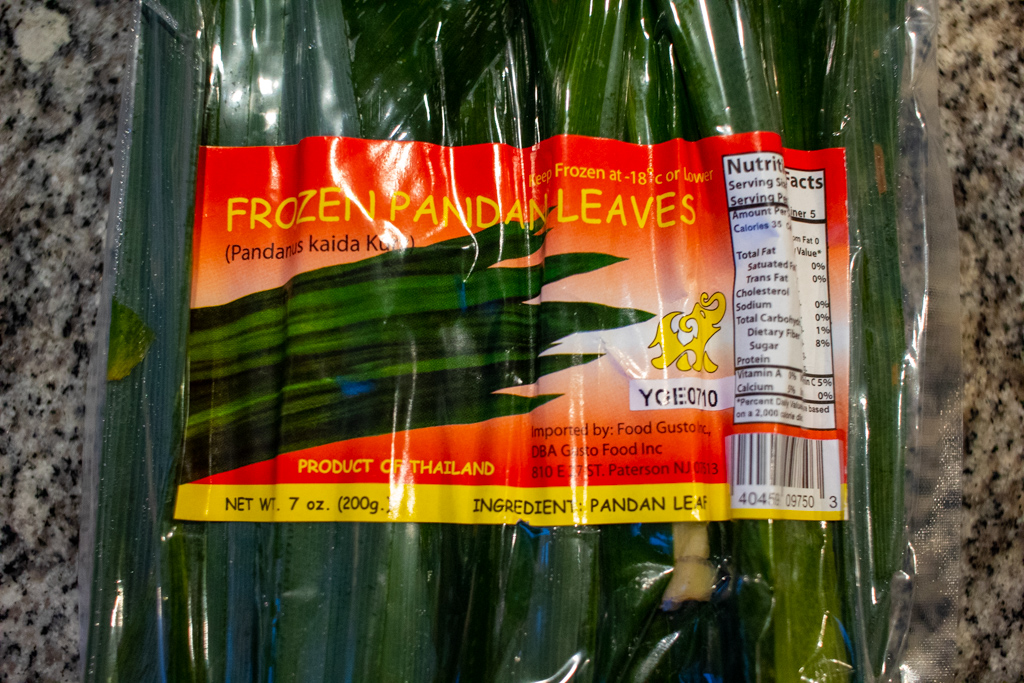
The pandan shrub is also known as screwpine in English and its leaves are used as a green food colorant, aromatic element, and flavoring in many southeast Asian cuisines. It is sometimes called “the Vanilla of Southeast Asia,” for its ubiquity rather than any similarity in flavor or aroma. In the pandan kaya recipe I used, the pandan is put into a blender with coconut milk and egg, which is then strained into a bain marie or double boiler, has the sugar mixed in and is slowly heated, stirring constantly to avoid too much direct heat that might curdle the egg. Even in such a situation, it is easy to heat the mixture too quickly and have a less smooth result than hoped. At least that’s what I tell myself.

For my initial foray into Kaya toast, I made a loaf of bread after the style of bread served in the Malaysian kopitiams (kopi=coffee, tiam=shop, so yes this just means coffee shop).
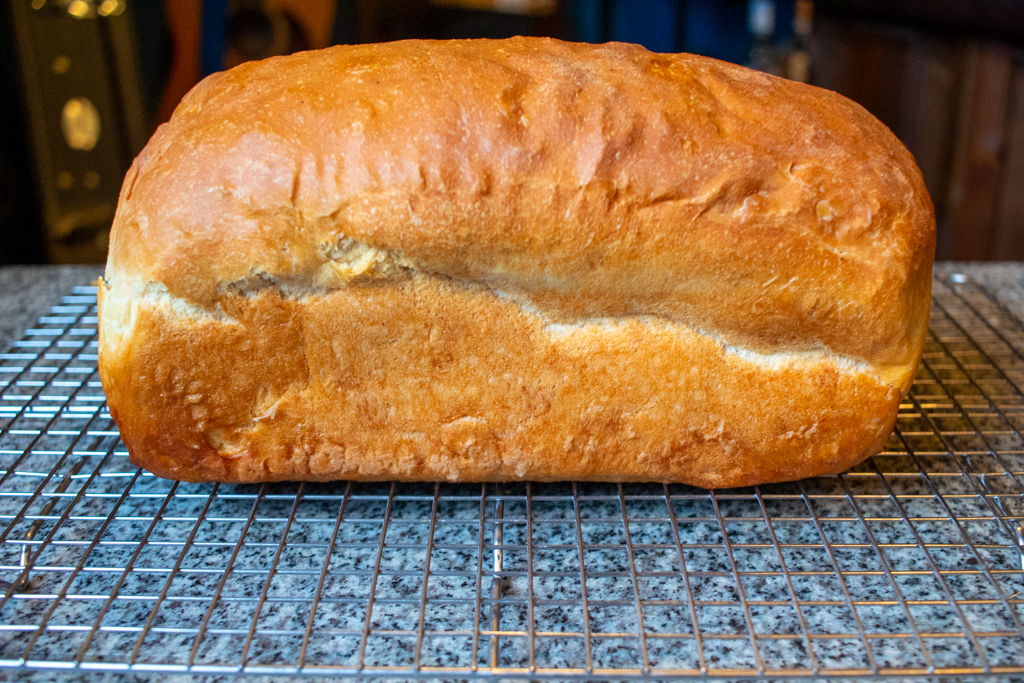
It’s a fine bread that toasts up well, but the recipe calls for lots of sugar and no salt at all. This makes for a quick rise and a bouncy, fluffy bread without a lot of flavor.
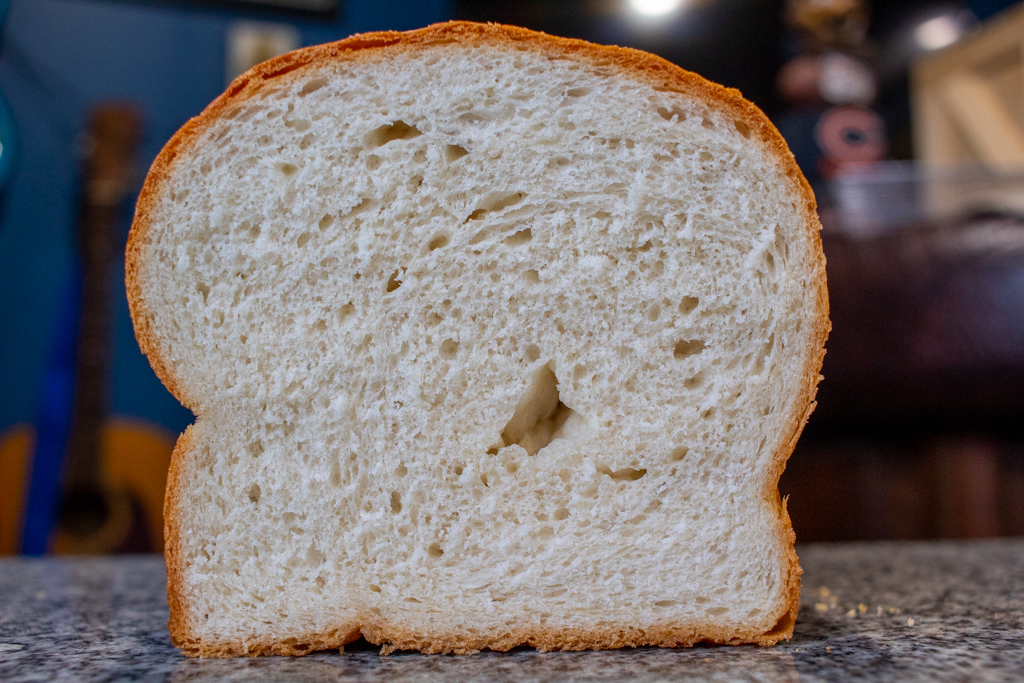
As mentioned, Kaya toast requires soft-boiled egg yolks for dipping, and in order to present them in the British way that the toast soldiers brought to my mind, I looked for egg cups that I could quickly source. After quickly scrolling past the $80 sets at the Williams-Sonomas of the world, I thought to myself, you know what would work as an egg cup, that I have plenty of in the house? A shotglass.
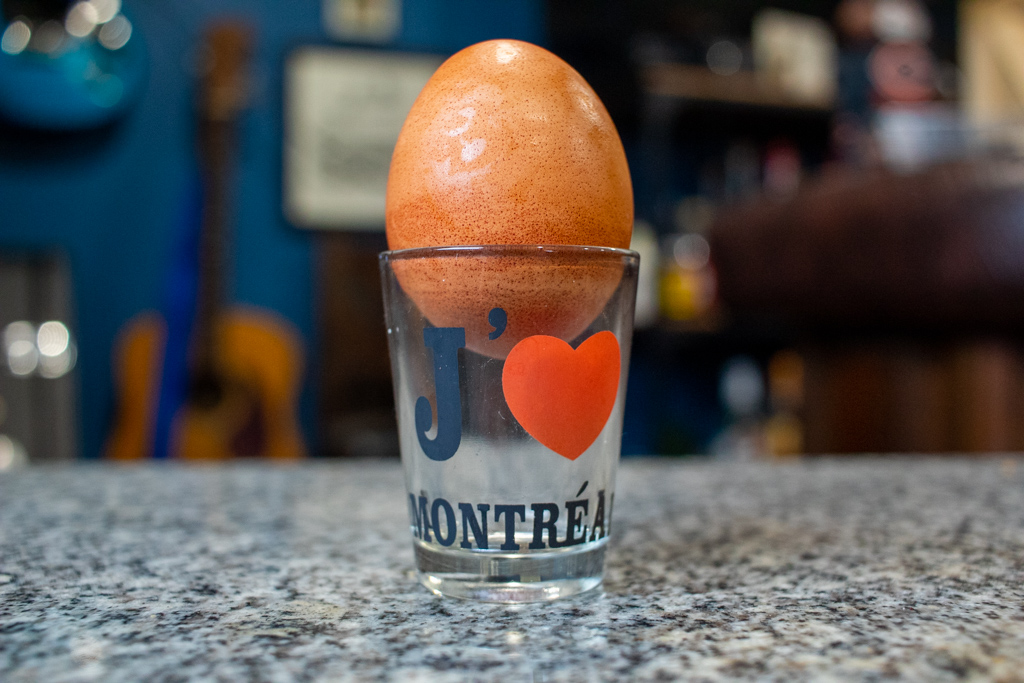
Kaya toast starts with a slice of toasted bread.
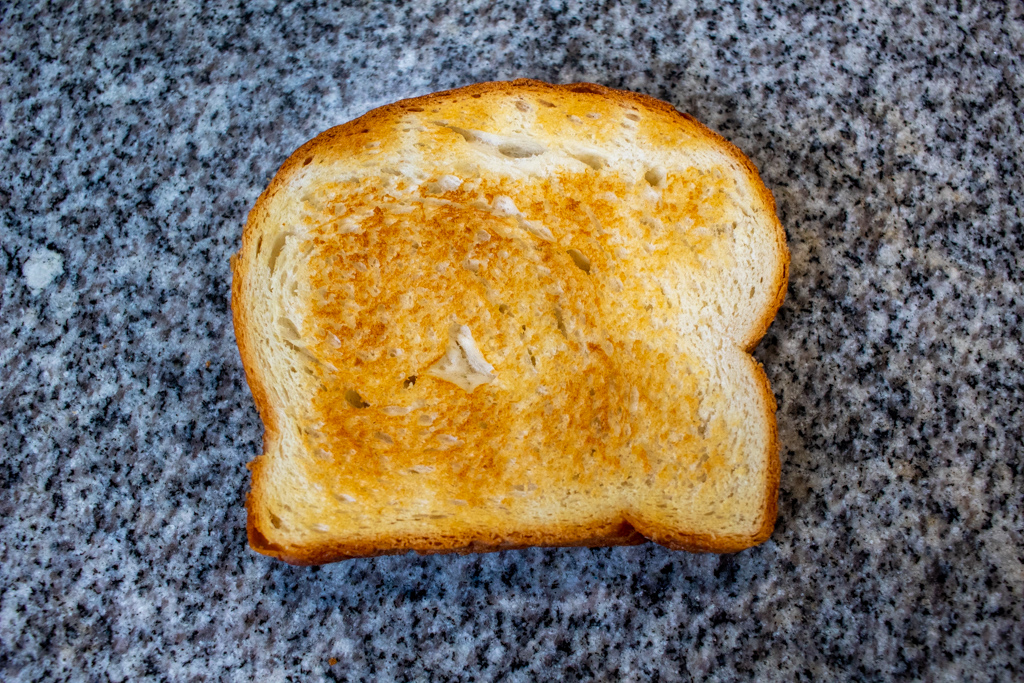
The kaya is spread directly onto the still-warm toast
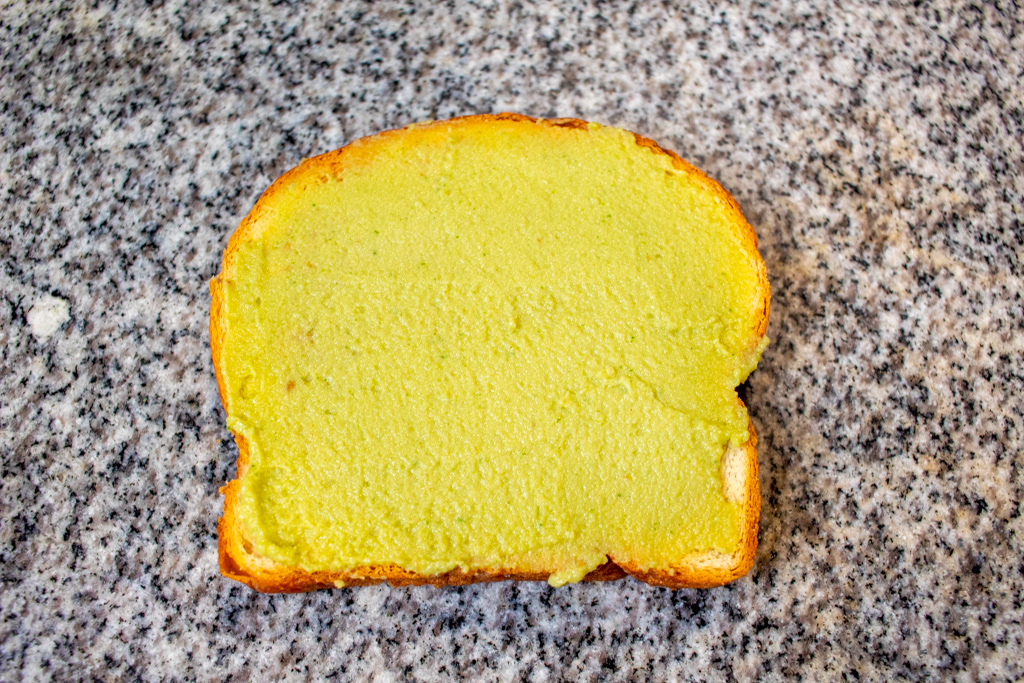
Cold slices of butter are added, in the manner of cheese slices, much like with the pineapple buns we tried last year
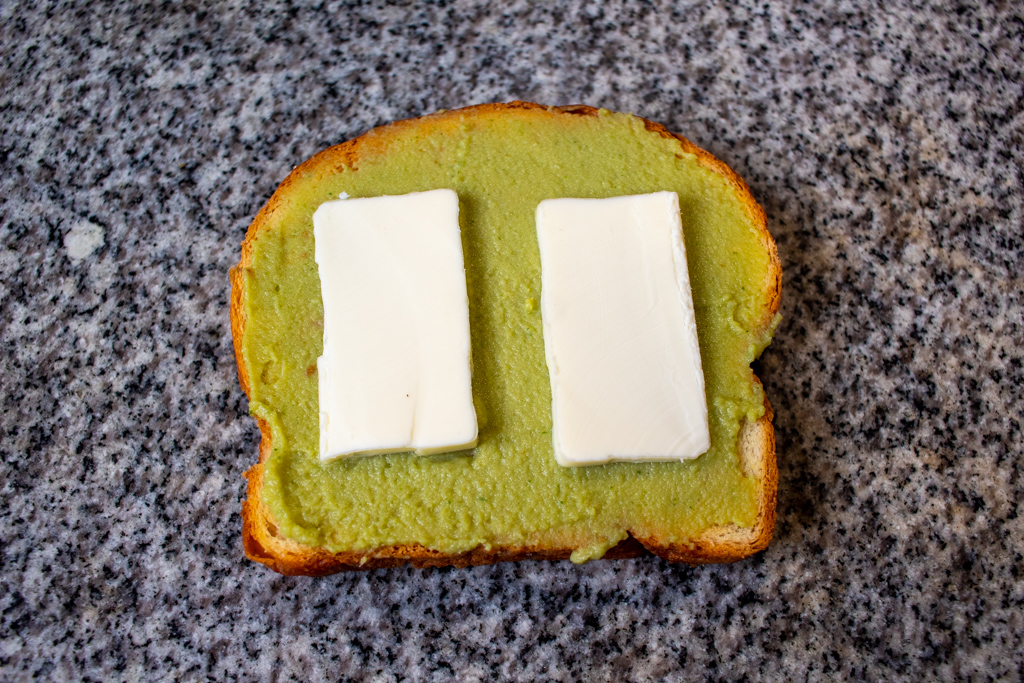
Generally, the crusts would be cut off the bread and it would be cut into rectangles. I of course vigorously resist cutting the crusts off my sandwiches, a vestigial reflex of my Midwestern upbringing.
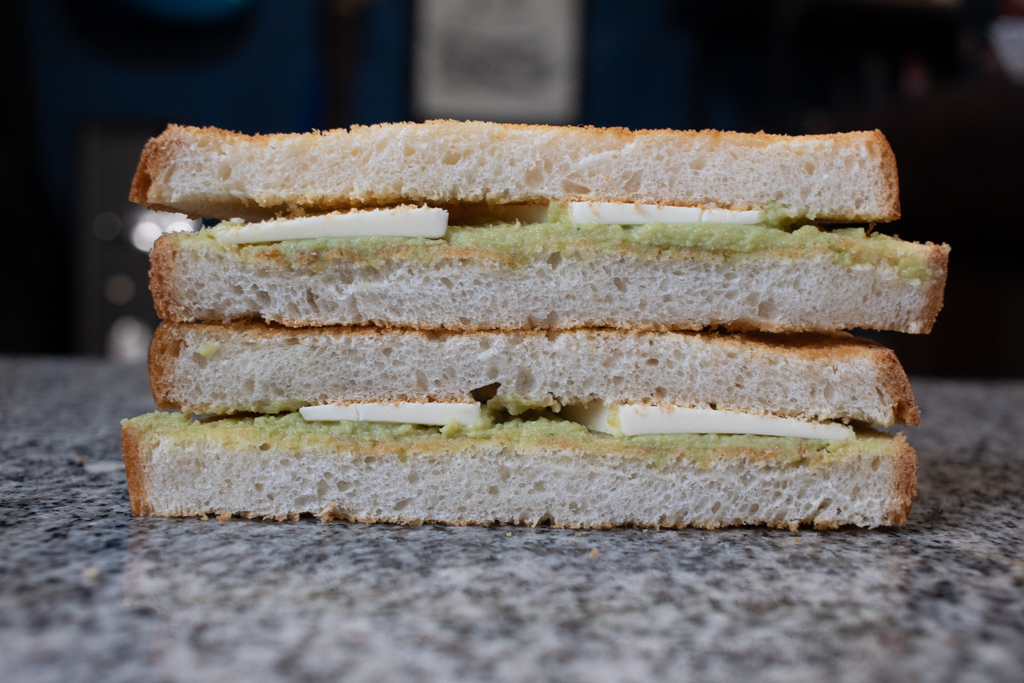
After the British fashion, I peeled back some of the egg’s shell and sliced away some of the white to reveal the still-liquid yolk.
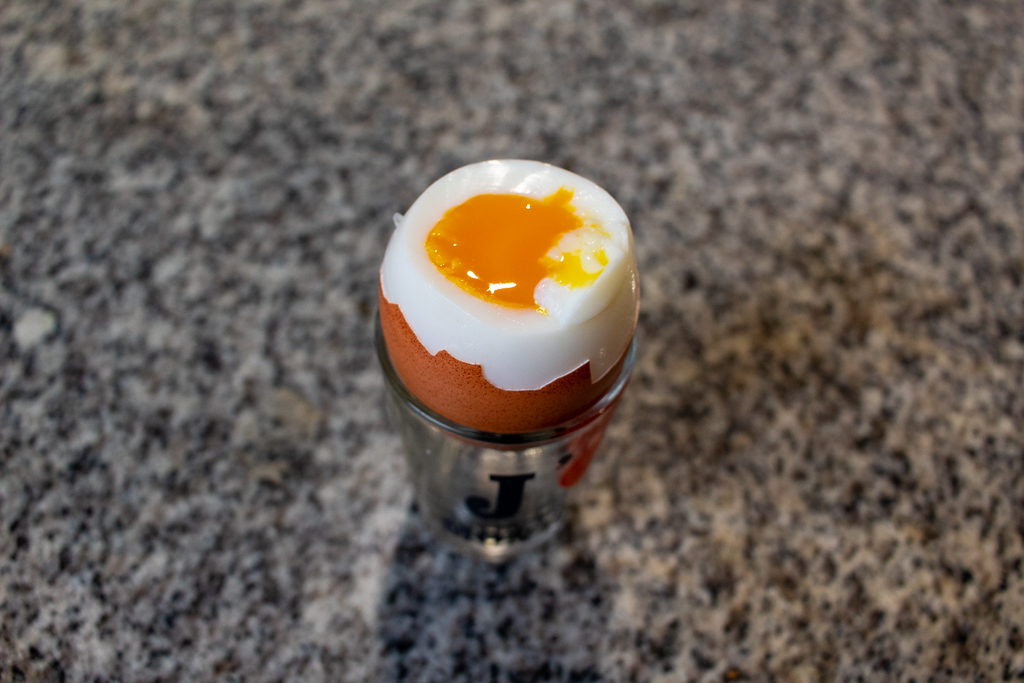
This then was my first take on Kaya toast. It was, of course, entirely wrong.
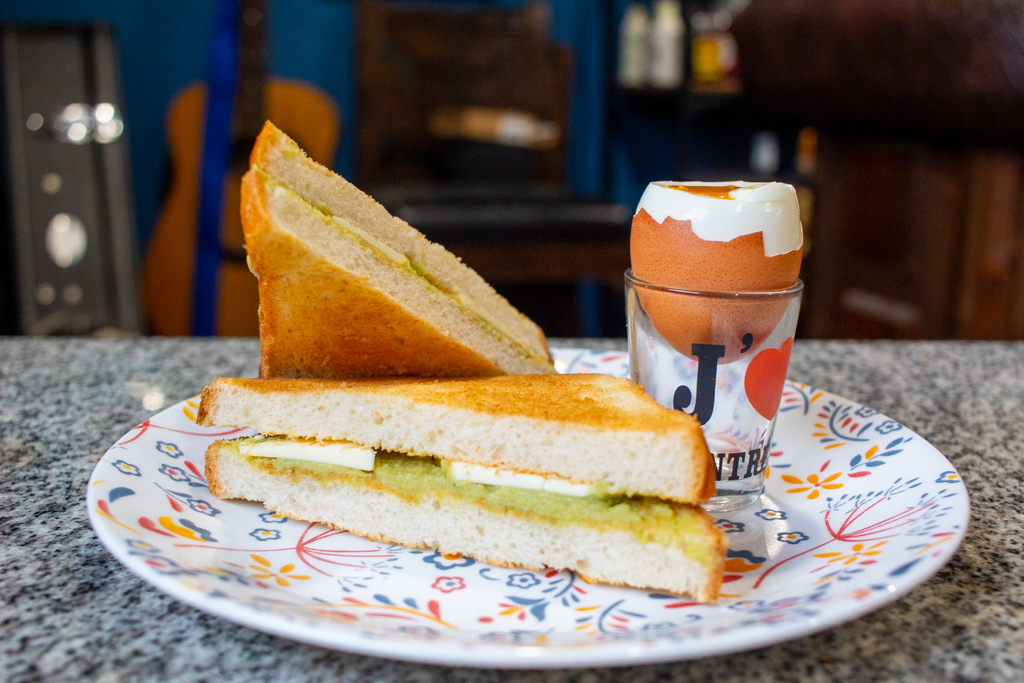
I served the Kaya toast with both dark and light soy sauces, and white pepper, for seasoning the egg.
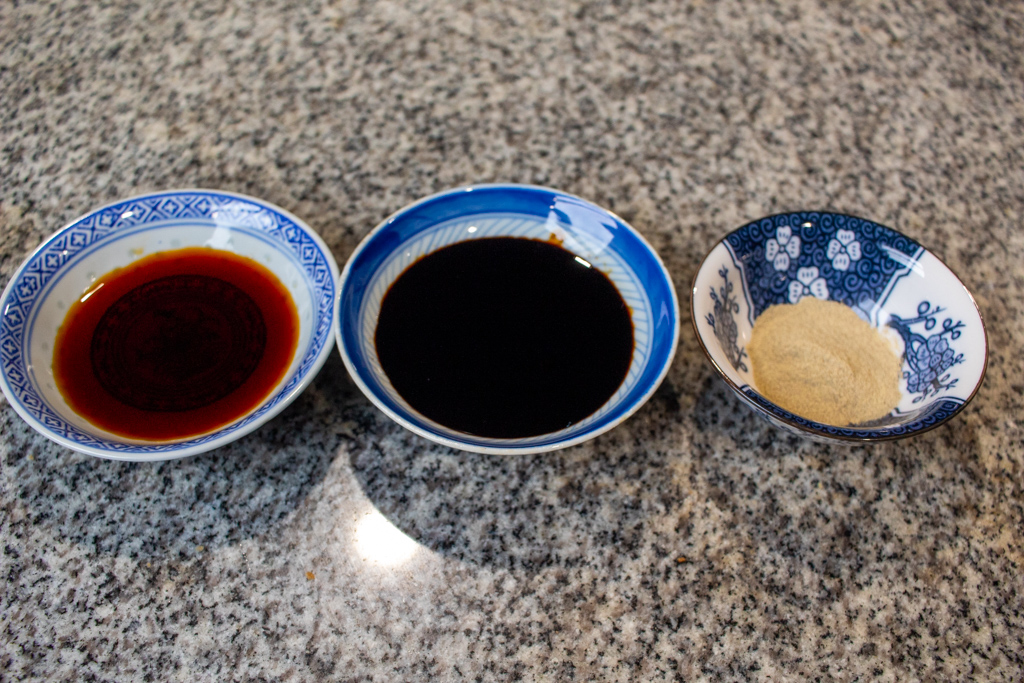
The sandwich is dipped into the seasoned egg yolk bite by bite and eaten.
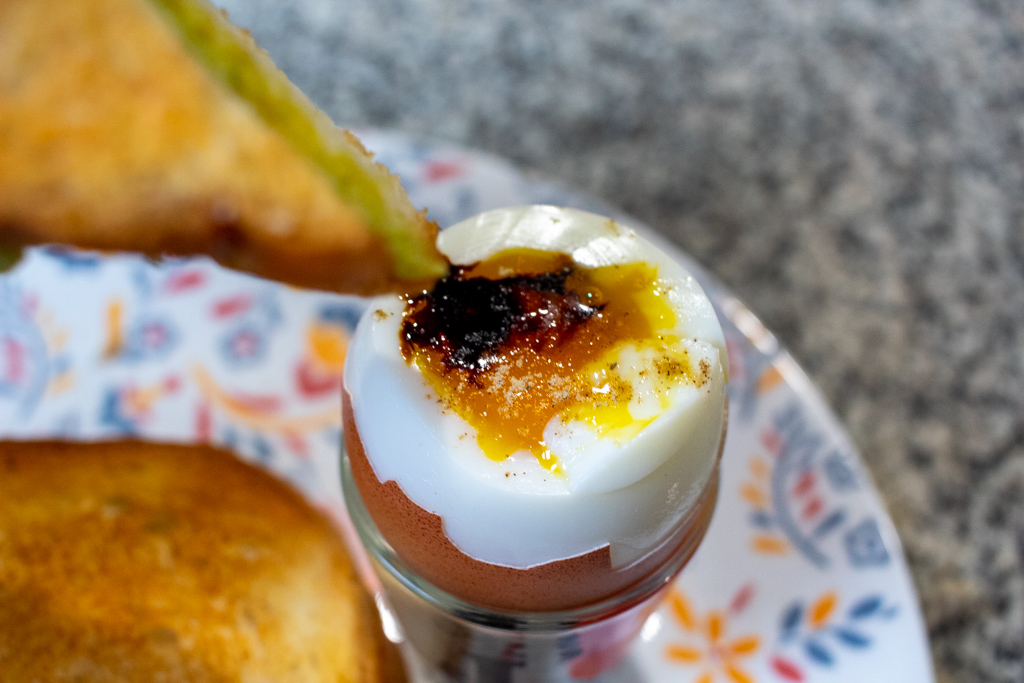
Sweet and savory is a combination that gets more play in American cooking than I initially thought about–American barbecue consists mostly of deeply savory smoked meats slathered with sauces tending toward the sweet, and the ever-popular honey mustard sauce is a sweet/savory combination all on its own. Brown sugar bacon is a sweet and salty treat, as is ham with its ubiquitous companion pineapple. There’s also the old Southern style of serving apple pie with a slice of cheddar on top. This Kaya toast is a combination along those lines. The soft and fatty stickiness of the egg gets a salty umami boost from the soy sauces, and that rich and salty combination not only complements the mild sweetness of the pandan Kaya and unsalted butter, but also contrasts pleasantly with the crispness of the toast. None of these flavors are extreme, so the collection of contrasts is comforting and familiar, though the Kaya itself may be a new experience.
In addition to the pandan Kaya, I tried my hand at making a caramel Kaya. This recipe also called for Pandan, but merely tied into knots and simmered with the coconut milk rather than blended for maximum extraction. The main difference in this recipe was the time spent caramelizing the palm sugar before mixing it into the heated coconut milk and tempering in the eggs. A braver cook than I could probably get a much darker result but I didn’t want to risk burning it. I also used slightly less egg in this version, resulting in a Kaya that featured the caramel flavor of the palm sugar more than the fragrant and grassy flavor of the pandan.
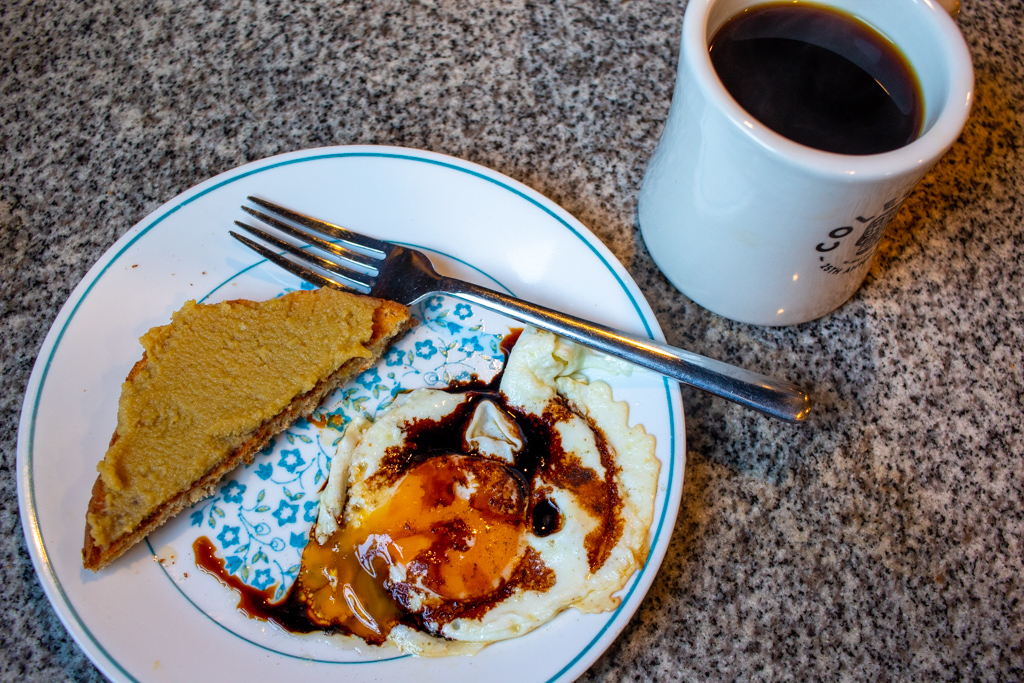
I also got lazy and served it open-faced with a sunnyside-up egg instead of soft-boiled. The soft, liquid yolk is the important part, or so I thought.
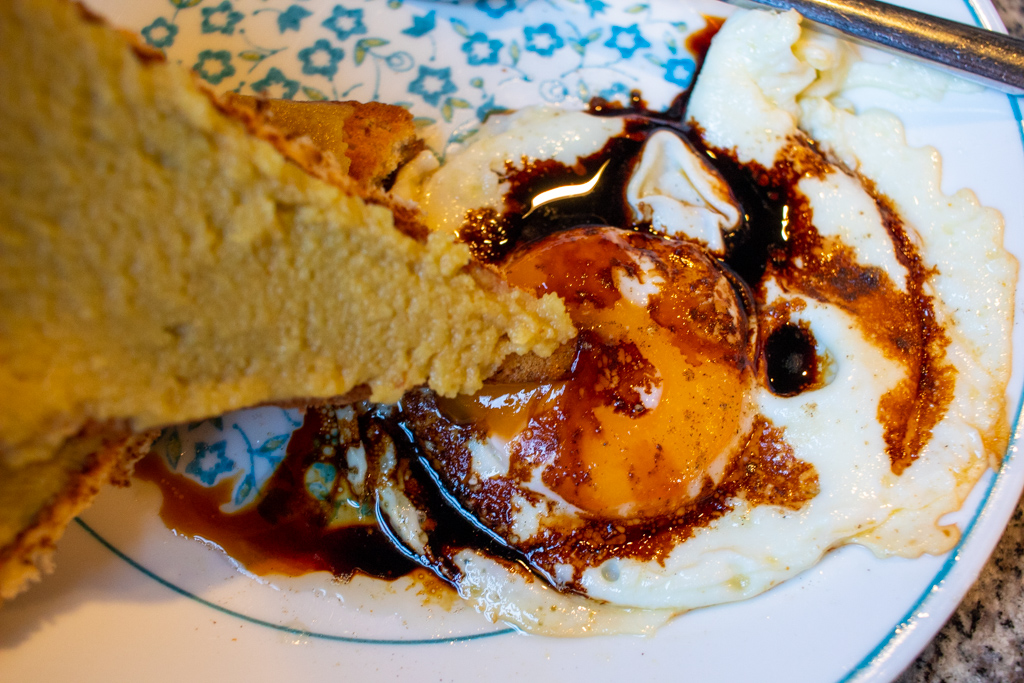
My friend Matt, who worked in Singapore for a while several years ago, agreed with my laissez-faire renditions of Kaya Toast. In his experience the presentation would vary from place to place–some would serve it open-faced while others would serve it as a closed sandwich, and the texture and presentation of the eggs would vary from place to place as well. Yet the majority of the photos I’ve seen online show the closed sandwich, the cut-off crusts, the rectangular toast soldiers, the “half-boiled” eggs that are peeled and served in a bowl on the side. The sole photo of Kaya toast that Matt was able to find from his stay there showed a similar presentation as well.
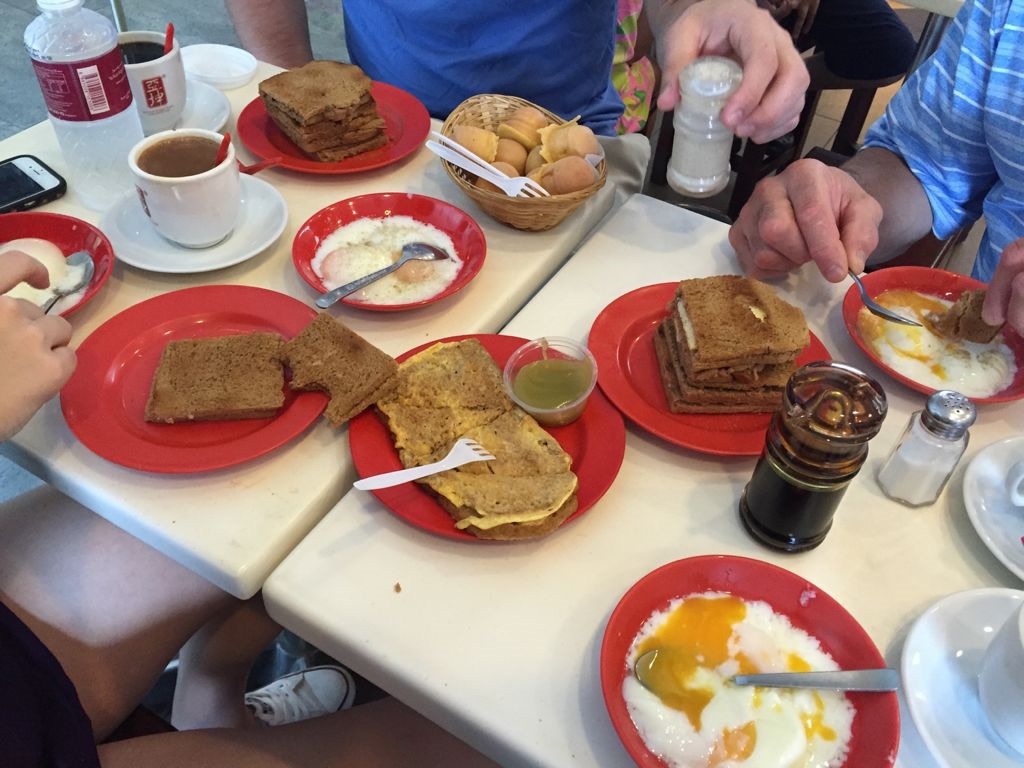
Grzegorz, who was such an enormous help with our recent post on Kanapki, also showed me a photo of half-boiled eggs, with whites that didn’t look fully set, and inquired tactfully if the real deal in Singapore wasn’t served as more of a closed sandwich rather than just toast-with-a-spread.
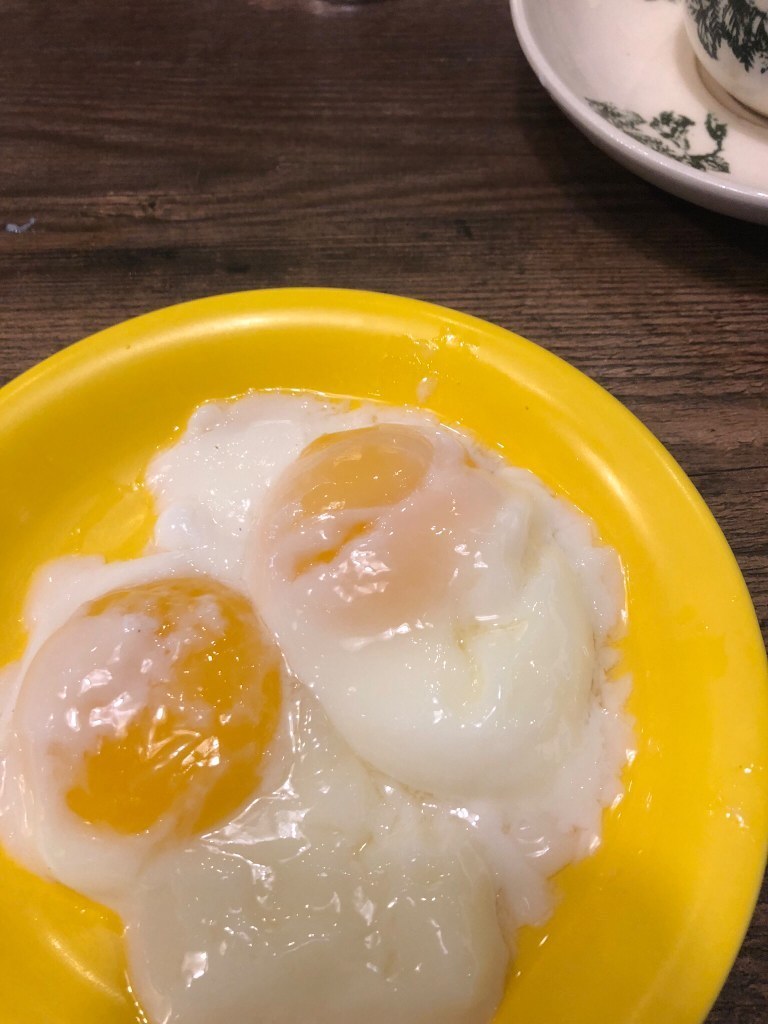
And you know, if I’m going to do a sandwich, I should do it right. So whether there are any hard fast rules about how Kaya Toast should properly be served–Singapore is, after all, a nation that likes its rules–I’m going to make a classic version. I also wanted to try both of my versions of Kaya head-to-head against the Yeo’s brand Kaya that I bought from Amazon. So I made crustless, rectangular, closed-face sandwiches using each of the three Kayas, with the requisite slices of cold butter.
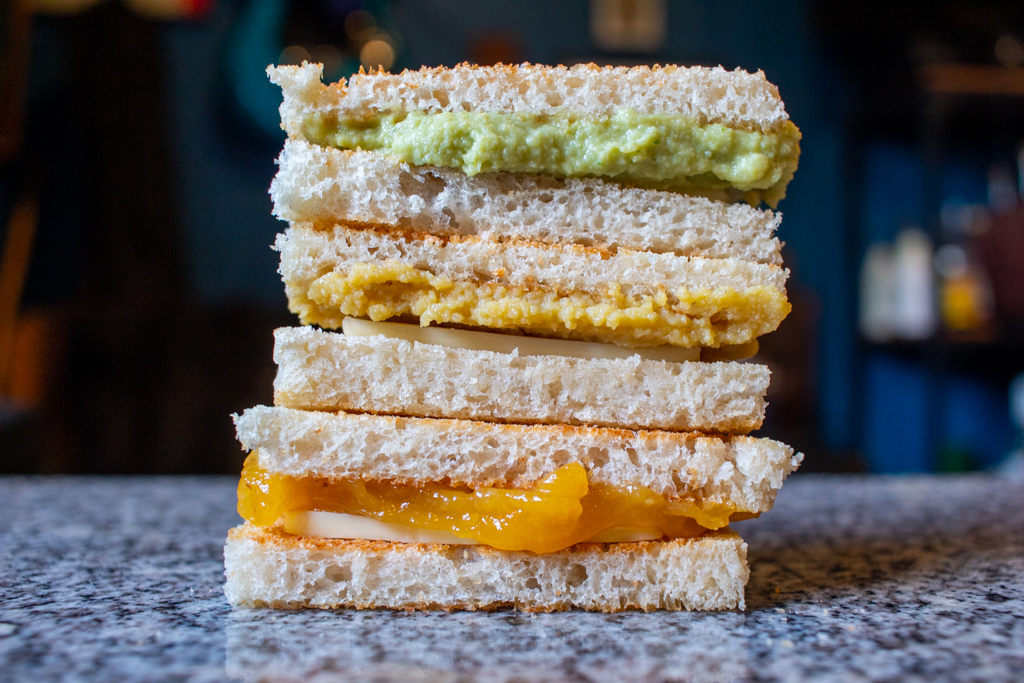
And I half-boiled a few eggs, sloppily peeling them into a bowl. I didn’t quite nail the glisteningly wet runniness of the whites that the photos from Singapore appeared to have, but I also wanted to eat the eggs, not wipe them on a handkerchief.
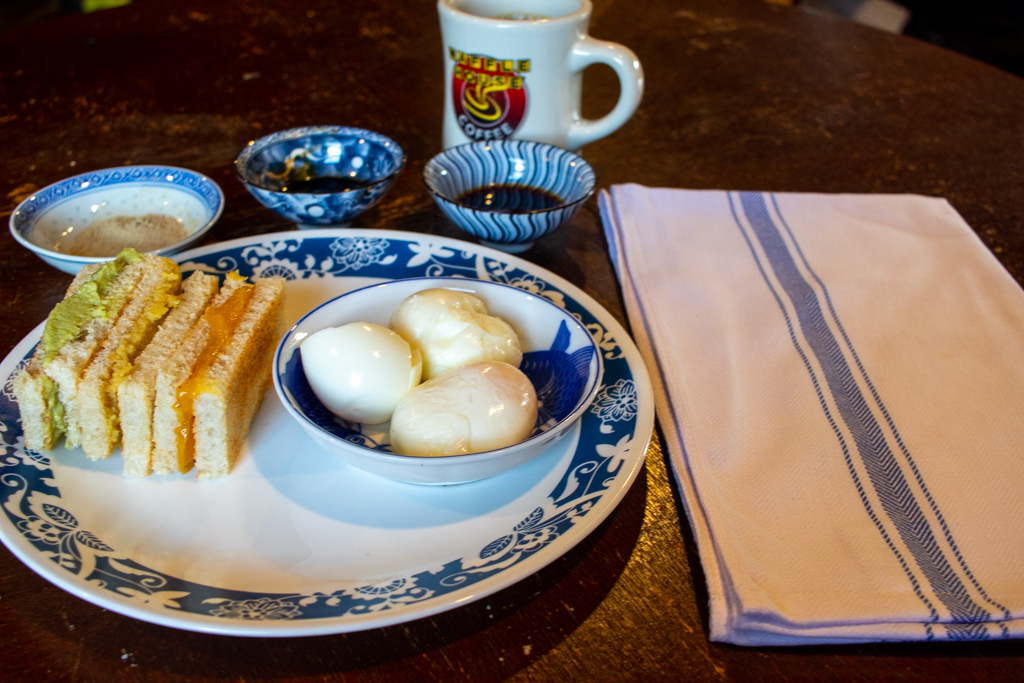
Once again, I served the toasts with the requisite dark and light soy sauces and white pepper. One advantage that half-boiled eggs slopped loosely into a bowl have over soft-boiled eggs served neatly upright in an egg cup is that they are much easier to season with soy sauce and white pepper.
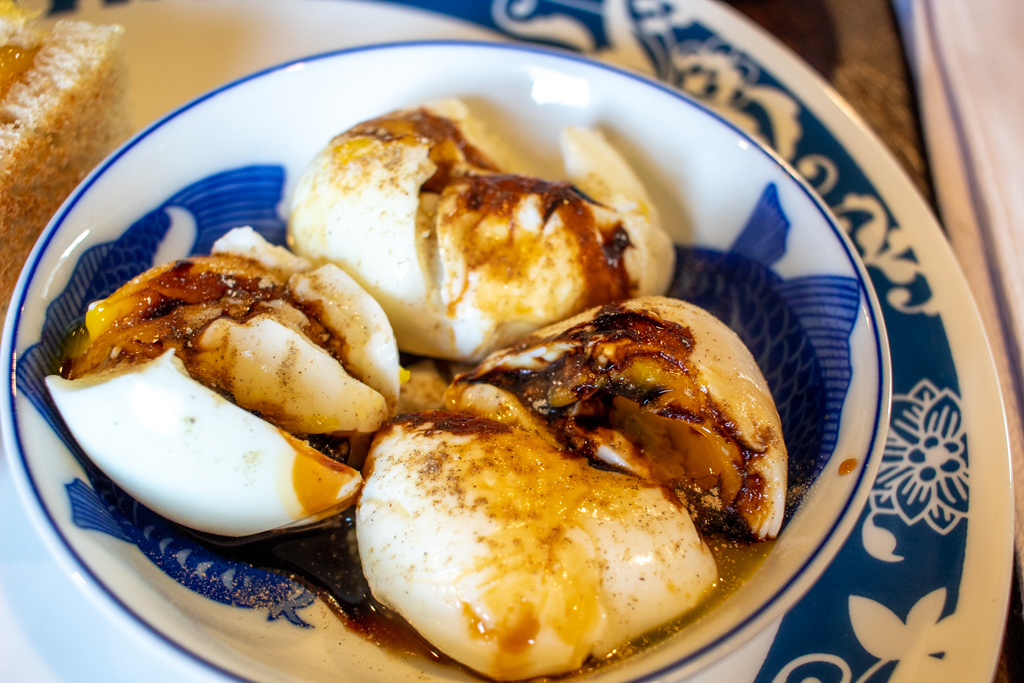
As Kaya Toast is a breakfast dish, I served it with my morning coffee, taken black in a classic Waffle House mug the likes of which has probably never been seen in Singapore or Malaysia.

And there were no surprises to be found in presenting these Kayas side by side. The Yeo’s brand was the smoothest and sweetest of the lot, though that cornstarch-slick texture wins it no points. My caramel Kaya by comparison, though not as sweet and with perhaps the least smooth texture of the three provided far more flavor with or without the customary dunk in egg yolk.
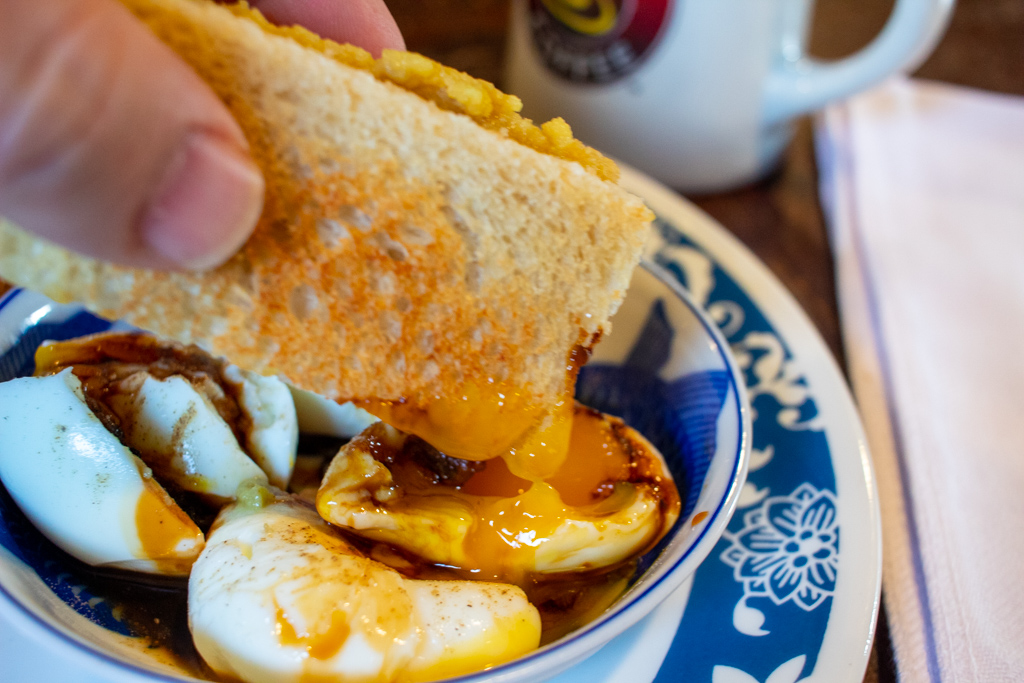
The pandan kaya though, with its hints of grassy bitterness and its enigmatic aromatics, was the best Kaya in the house.
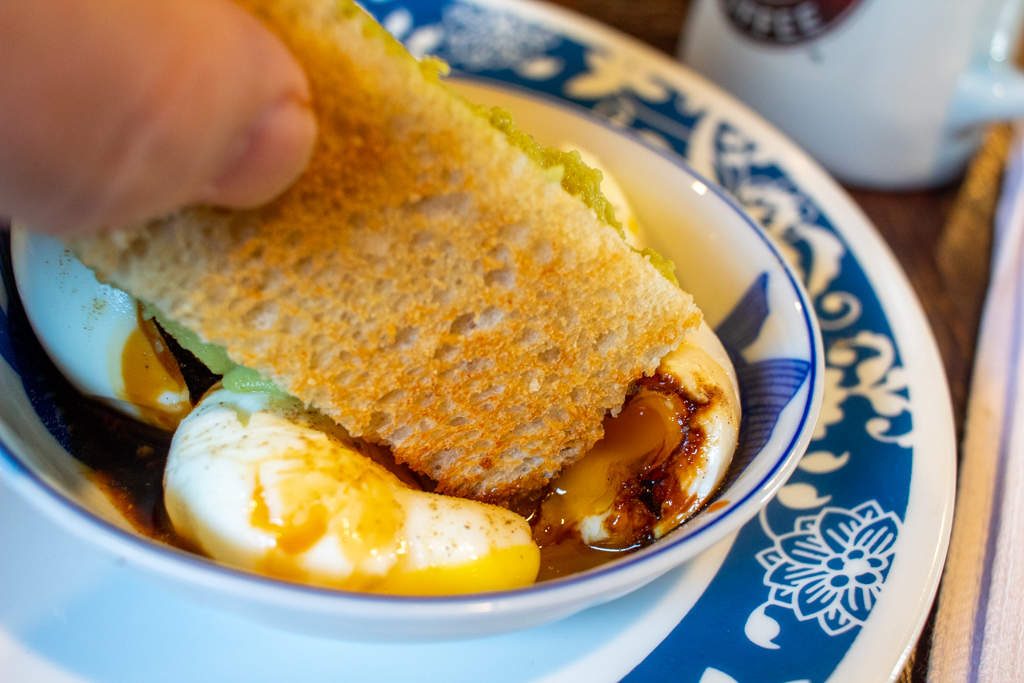
It was the least sweet of the three, and the richest, with a higher ratio of egg-to-sugar than my caramel Kaya or, I presume, the starch-thickened commercial variety. That balance of rich, fatty egginess with a lower level of sweetness and that strong presence of the pandan just put this Kaya in a different league than the others. There are a ton of different kinds of Kaya out there, and mine may not have been the most skillfully prepared, but it was delicious and so were the sandwiches. It felt good, not only to have made this delicious coconut jam, but to have gotten things right. At least, I hope I have.
As always, we’d love to hear from you, you connoisseurs of Kaya toast, to tell us where we’ve gone right, where we’ve gone wrong, and most importantly, how. Please feel free to leave us a comment, and we’ll be back by the end of the month with a post on Laotian Khao Jee Pâté!

I like sandwiches.
I like a lot of other things too but sandwiches are pretty great


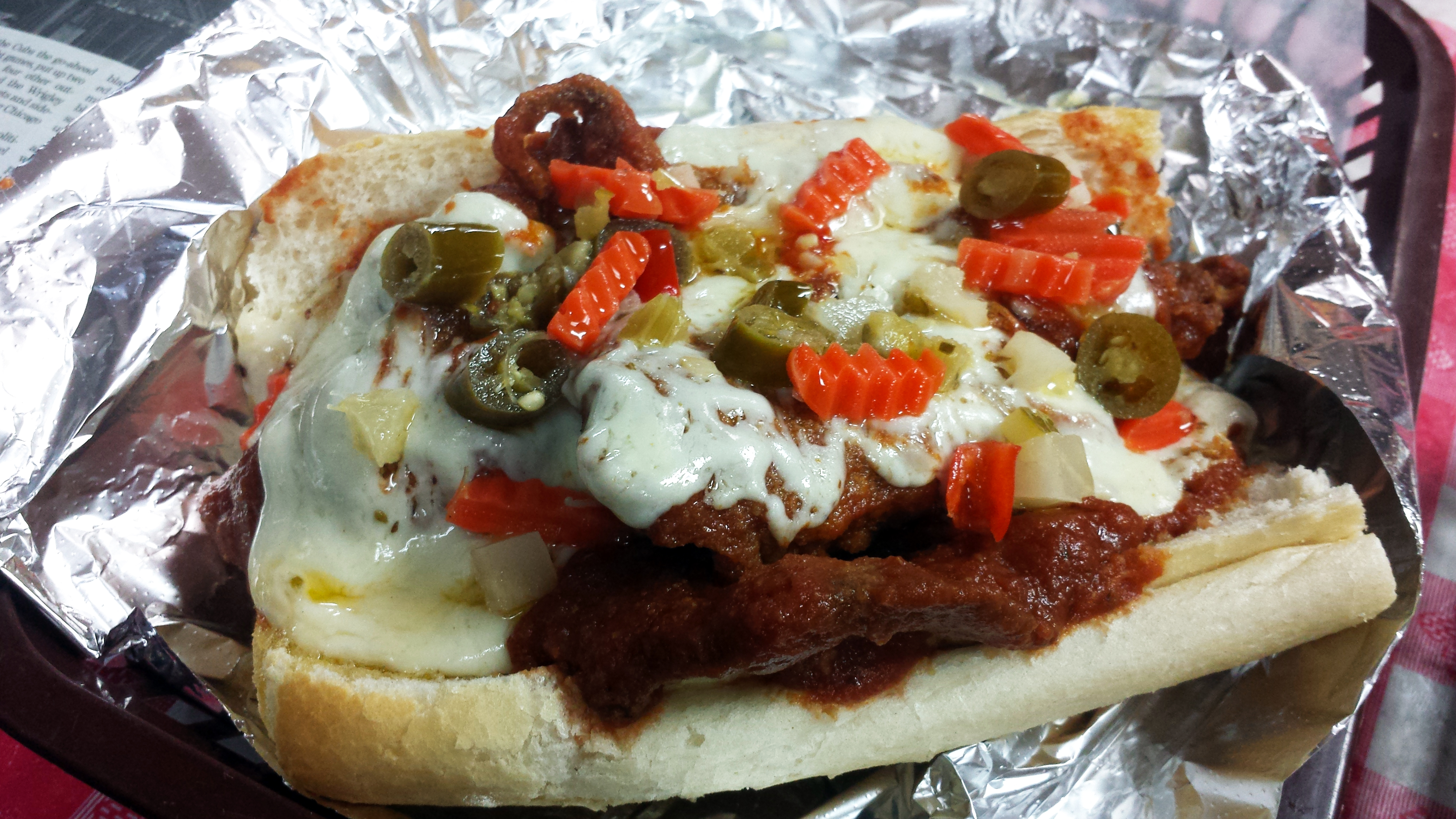
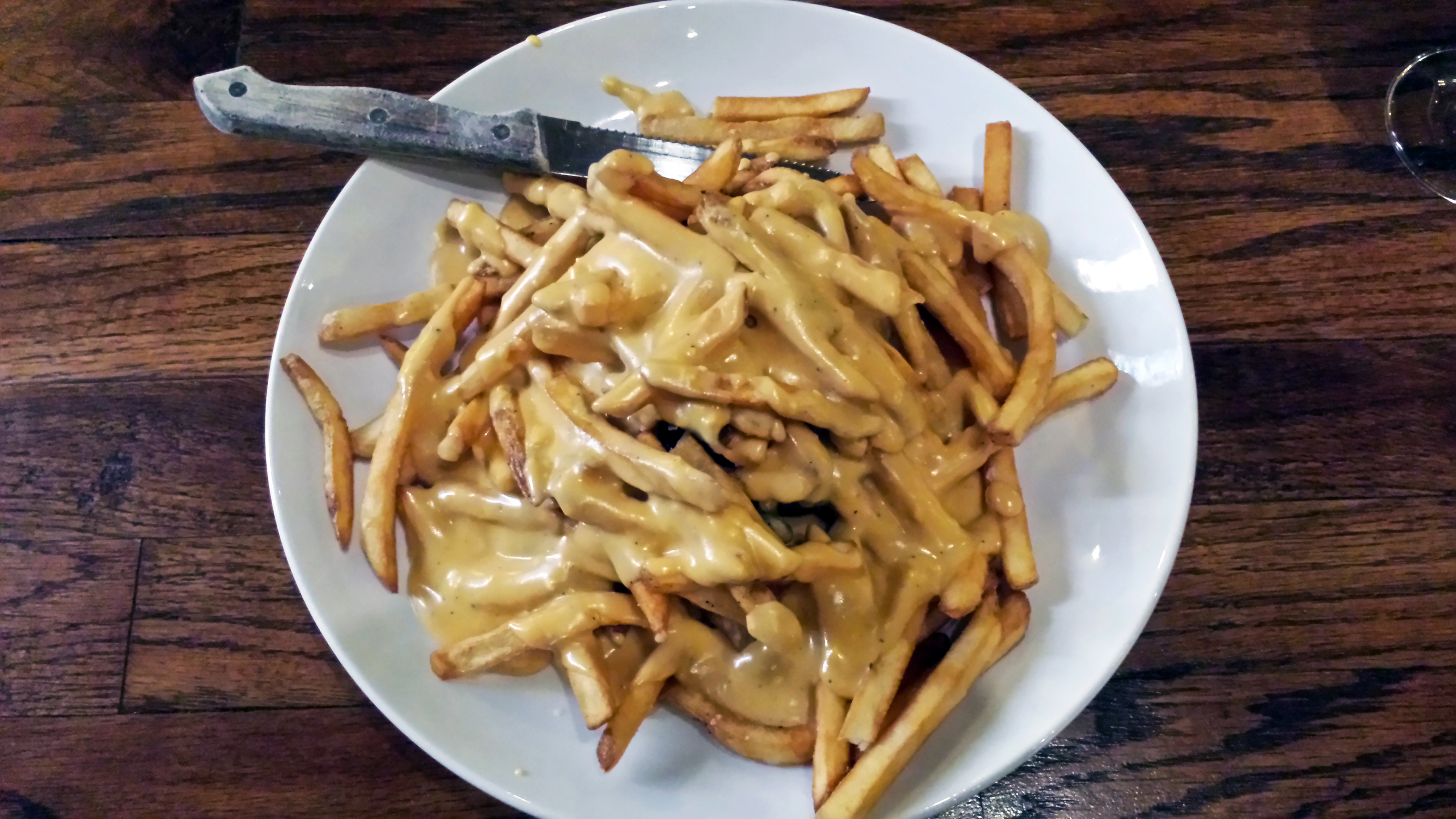







The kaya looks spot on! Growing up, I remember eating kaya toast with the eggs being cooked softer, much closer to the pictures provided by Grzegorz.
Definitely not to most people’s taste but I remember drinking the eggs more than you eating them so to speak.
That’s great to hear! As far as the eggs go, if I ever find myself in Singapore I’ll eat what’s put in front of me for sure but in my own kitchen I’m cooking those whites a bit firmer 🙂 Thanks for the comment Aaron!
In my experience, it’s quite rare to dip your kaya toast into the egg. I almost never did, they’re more like two complementary dishes rather than a single dish. Congratulations on getting your kaya right, by the way. It’s not that easy to make, and you can burn the stuff with a moment of inattention. You’ve got skills!
Older kopitiams get you to make your own soft-boiled eggs: Put two eggs in a large plastic cup. Add boiling water and cover. Wait exactly 7 minutes. Break the eggs into a saucer and season to taste. Slurp it up (foot up on the chair is optional).
LB, Singapore/Malaysia
I liked all the research about the golden peninsula, the fascinating maps(!), the origin of this apparently fusion dish… And it definitely deserves a place in a sandwich blog too. Cos let’s face it, anyone can write recipes.. But to really understand the how’s and the why’s is what makes this post unique!
So although I have a very short attention span now just like everybody else who’s into social media, I read this post very carefully and end to end. That’s a self congratulatory statement to myself 😅.
Coming to the recipe itself, I couldn’t fathom this concept of dipping any toasts into a soft boiled egg, I mean they are solid right! So how can anything be dipped? So I ended up researching how Kaya toast is eaten and The more I researched, the more dismayed I got with the extent of liquification. 😀😅. It was nearly raw egg in one of the videos I saw. So I definitely share ur views about not ingesting it in liquid form. I will certainly try it but with a poached egg level of cooking.
Superb writing Jim! And it certainly takes a lot of effort to research it all and put it out into a piece that makes sense ☺️